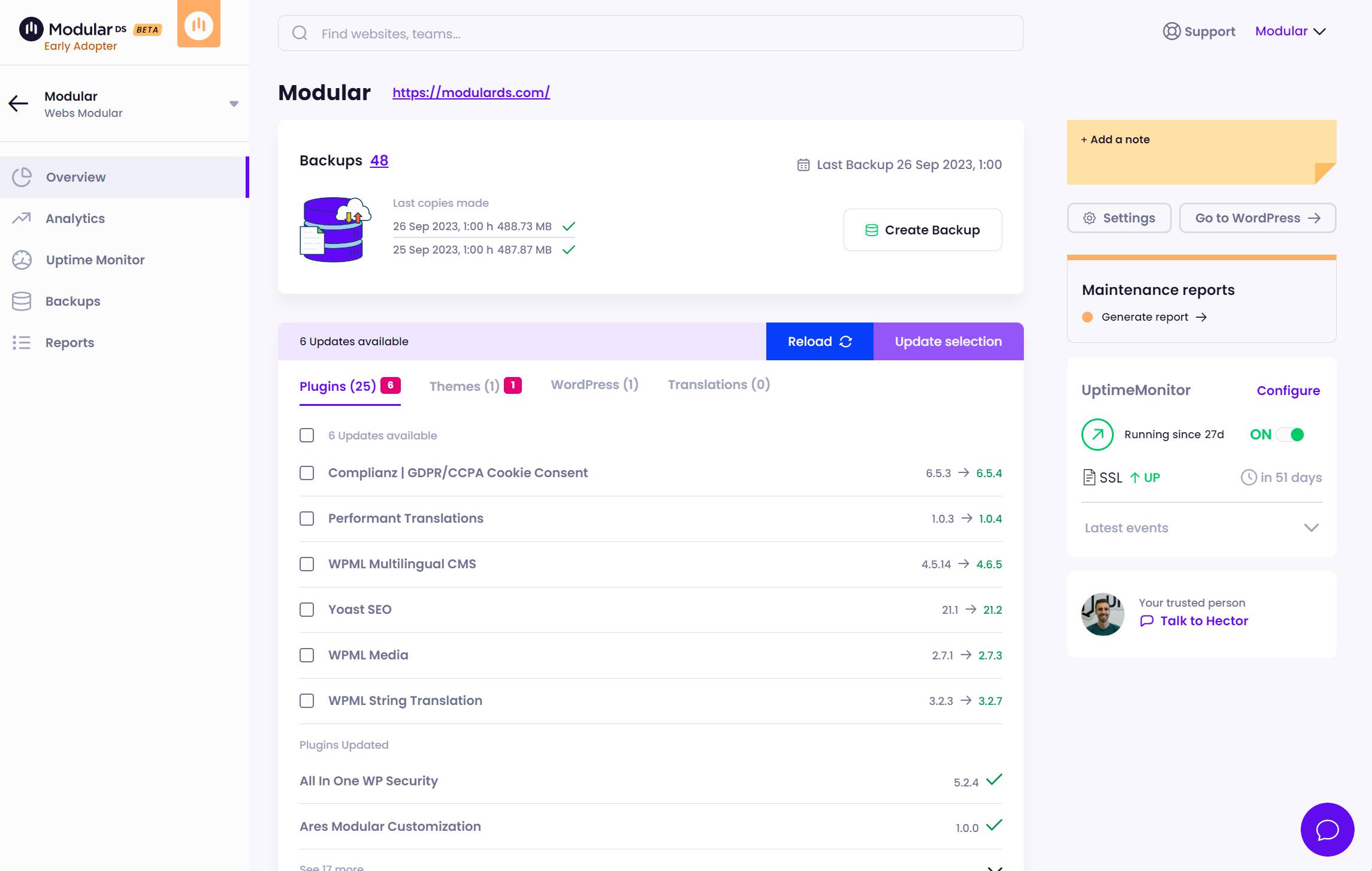How to create an attractive web proposal step by step.

We’re not going to deceive anyone, writing and preparing proposals is not the preferred job of those of us who work in the digital world.
Some of us enjoy designing to ensure that the user experience and visual identity of a website are perfect, while others enjoy programming or laying out the structure to build those websites and make everything work as it should.
However, something we have to deal with in order to allow us to do our job is selling or negotiating with a potential client. And for that, creating a good web proposal can be crucial if we want to close the deal.
In this article, we will tell you about the essential content that your web proposal should have and how to present it in an attractive way to maximize your chances of success.
Tabla de contenidos
What is a web proposal?
Normally, once you have spoken with a potential client about a project, they will ask you to send them a proposal or document summarizing what you have discussed and the conditions you offer to work together.
This doesn’t necessarily mean they will hire you, and sometimes we spend time preparing a proposal only for the client to end up choosing another professional. That’s why it’s essential to create a standout web proposal.
In it, you should cover the client’s needs, technical specifications of the project, the timeline, and, of course, the price of the service. All while positioning yourself as the best option for the job.
In summary, a web proposal is a document that helps you sell your services to potential clients after you have had initial contact with them. Therefore, it is a crucial element that should be well-developed.

Guide to creating an irresistible web proposal
Before we begin, it’s important to mention that a good web proposal should include the information that the client expects and that will help you close the deal, but not too much to make them think twice before reading it.
It should also be written in a way that minimizes any doubts and aims to avoid confusion with technical terms or ambiguities that may leave things unclear.
That being said, let’s dive into the essential content that should appear in your web proposal:
1.Problem Identification
This part is the most important in the entire process. After listening to the client, we must capture their needs in the document.
Clearly showing the problem they are facing with their business or mentioning any opportunity they may be missing out on due to their current online presence can be a differentiating factor that leads them to choose your product or service when you are offering a website.
This way, you will be able to demonstrate that you understand perfectly how their business works and how you could solve the problems that have been identified previously on their website and their needs.
The potential client will understand that we are a serious company and will feel secure.
2. Proposed Solution
At this point, we need to explain what we are going to offer and its positive impact on the business operations. This is what really interests the potential client.
From web design to development, including additional services such as SEO positioning or content marketing to generate brand awareness and traffic.
If we are able to communicate it in terms of business benefits, rather than just design or development technicalities, it will be a positive aspect for the client to truly understand the advantages.
For example, by explaining that through a new, more modern web design aligned with their corporate identity, we will improve trust and user experience, which will result in an increase in conversion rate.
It is important in this part to clearly define the tasks and work included in the project to avoid future issues like “I thought you could do this for me, that it was included, etc.” We have all had clients like that. It’s better to cover our backs.
3.Timelines and Time Estimation
Here, we will outline the estimated timeframe that we will need to complete the project, usually divided into different phases that we establish.
During these phases, we will present initial drafts, such as the web design, to receive feedback and potential corrections from the client in case they proceed with the project with us.
It is important to consider that some phases require more time than others, and this should be reflected.
It is also important to clarify that the project depends on the entire team involved, including THE CLIENT, who is usually the one that takes the longest to provide images, videos, documents… Sound familiar?
That’s why it is essential to list the materials and work processes that will be necessary throughout the workflow (image editing, texts, etc.), as well as the content and specifications that we will require from the client or other professionals.
4.Project Budget
A good practice is to inquire about the total budget available for the project during the initial contact with the potential client.
Few clients will respond, and many professionals are hesitant to ask the question. However, if you manage to obtain a figure, it will be much easier to create a proposal that fits their possibilities. As we know, there are many ways to build a website.
If you don’t receive a direct answer, a technique often used by professionals is to offer three different plans based on the included functionalities.
For example, a basic proposal where the design and development of the WordPress website will be done, an intermediate proposal where logo design and SEO work (keyword research) will be included, and a premium proposal that incorporates an online payment system (e-commerce).
Always inform the client that the work to be done is fully scalable, and in the case of choosing the first or second plan, the functionalities of the third plan could be implemented in the future.
If the project has different components and you only provide a single budget, it is advisable to break down the budget for each part. This way, the potential client will have a clear understanding of the costs for each phase and you can demonstrate that the budget is justified and reasonable.
5.Maintenance | The Great Forgotten
If the proposal you are making is for a website, don’t forget to include and discuss with your client a section about the importance of maintenance for WordPress or other CMS-based websites, and the plan you offer to take care of those tasks.
Closing this agreement at this stage will be much better than after completing the web design project, when the client, due to their lack of knowledge, may think that since the website is already done, they don’t need to pay anything else.
6.Value Proposition | Why You?
We can say that this is perhaps an optional section in your proposal or that it doesn’t have a set order. It could go at the beginning or at the end.
It consists of a brief but concise explanation of why you or your company are the best choice for the project. Highlight your skills, the projects you have completed (with direct references to them), and, importantly, what it’s like to work with you.
7.Call to Action
Lastly, always end with a clear call to action for the next steps if the client decides to work with you, aiming to eliminate obstacles and streamline the decision-making process.
Will you schedule a meeting with them? Do you want them to call you? Will you sign a contract? Seize the moment when they have just discovered that your proposal is the right fit to close the deal and secure the project.
In many cases, incorporating an online signing and payment system (perhaps for an initial part of the project) is the best way to streamline the process.
BONUS: Send Your Proposal in Web Format
What better way to demonstrate to your potential client that you are the right person to carry out their web project than by sending them your proposal in a page accessible from any device (computer, tablet, or mobile) with a simple click of a link, without needing to download anything.
You will also be able to track with Google Analytics if they have viewed the proposal, how many times they have done so, and edit it if you made a mistake without having to resend any documents.
But above all, you will differentiate yourself from the 99% of web professionals who are still not doing this.
Conclusion
A web development proposal must be well-argued and clearly defined for a client to accept it. No matter how skilled a designer or programmer may be, if they are unable to address the client’s needs in a document that is easy to understand, they may lose a significant portion of their projects before even starting them.
Therefore, we also recommend that once you create a proposal that you are comfortable with, turn it into a template to use as a basis with the rest of your clients.


